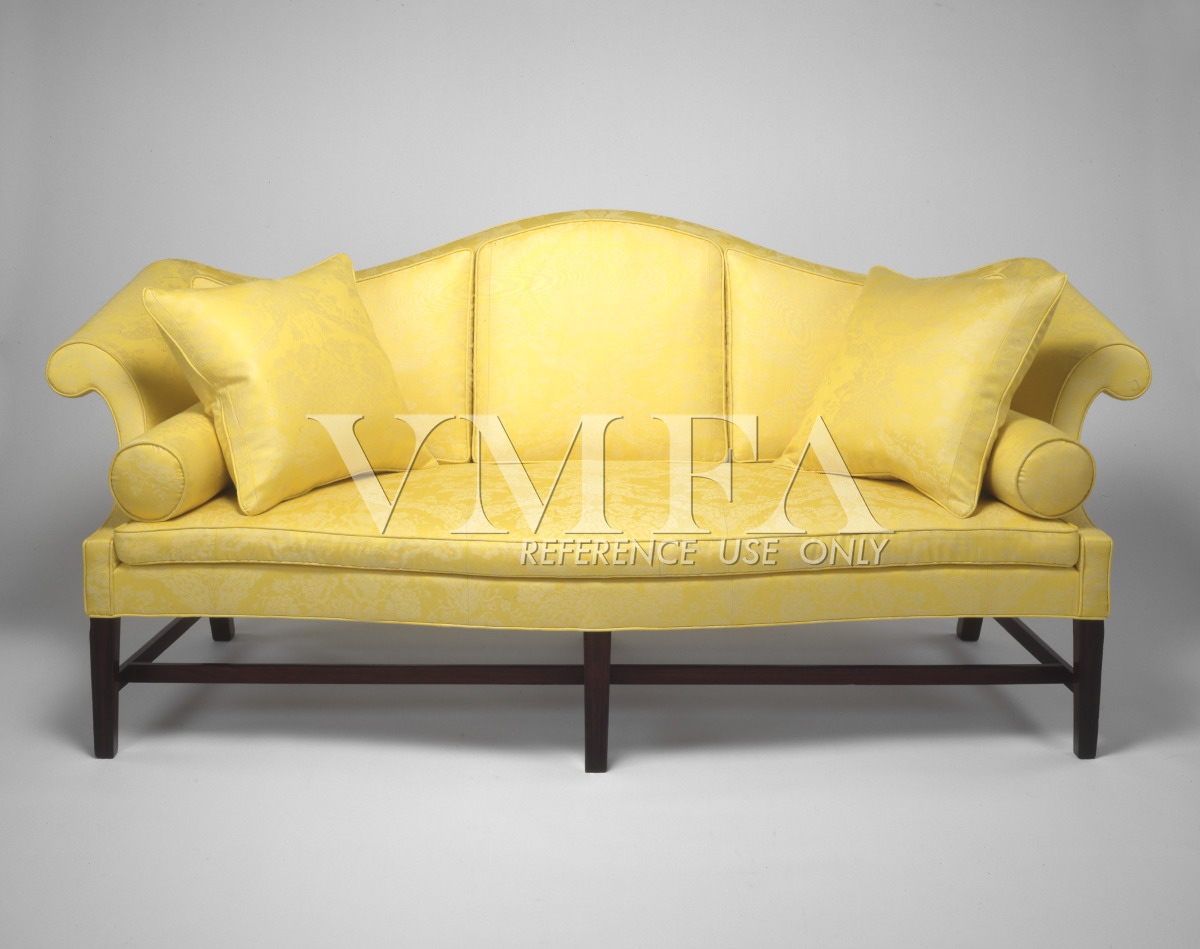
Chippendale Sofa (Primary Title)
Unknown (Artist)
This sofa represents one of the most enduring influences of Englishman Thomas Chippendale’s The Gentleman and Cabinet-Maker’s Director (1754). As a large-scale parlor piece, the sofa was the most elegant and effective medium for displaying fashionable – and expensive – textiles. According to the standardized Prices of Cabinet and Chair Work, published in Philadelphia in 1772 (then the second largest city in the British Empire after London), a sofa with straight or “Marlborough” legs cost 4 pounds and 10 shillings. But its silk or wool covering could approach ten times the amount of the frame. This luxury status was enhanced by the sofa’s implications of leisure; as Chippendale instructed, “when made large,” a sofa should include “a Bolster and Pillow at each End, and Cushions at the Back, which may be laid down occasionally, and form a Mattress.”
This sofa was reupholstered in 2000 according to Chippendale’s specifications and the example pictured in the 1771 Portrait of a Lady by American artist John Singleton Copley. Known for his talents with drapery painting, he depicted the elegant figure reclining against a folded seat cushion propped by a bolster and pillow.
Some object records are not complete and do not reflect VMFA's full and current knowledge. VMFA makes routine updates as records are reviewed and enhanced.

